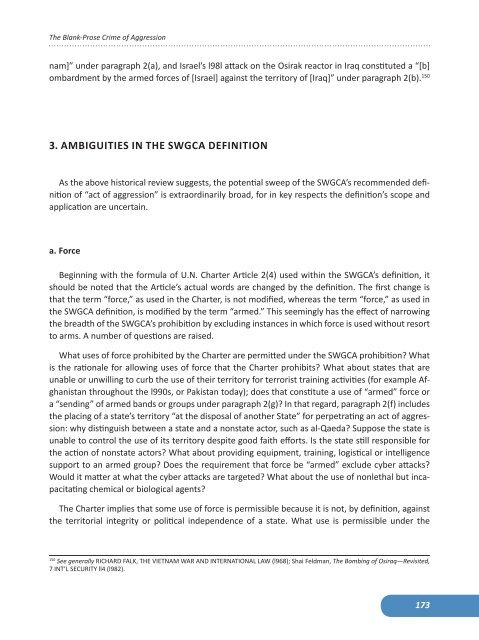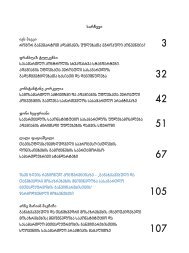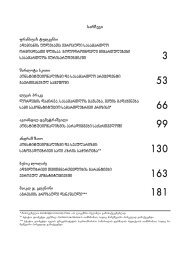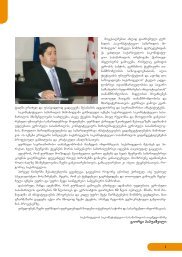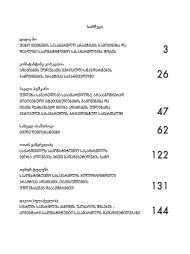Contents - Constitutional Court of Georgia
Contents - Constitutional Court of Georgia
Contents - Constitutional Court of Georgia
You also want an ePaper? Increase the reach of your titles
YUMPU automatically turns print PDFs into web optimized ePapers that Google loves.
The Blank-Prose Crime <strong>of</strong> Aggression<br />
nam]” under paragraph 2(a), and Israel’s l98l attack on the Osirak reactor in Iraq constituted a “[b]<br />
ombardment by the armed forces <strong>of</strong> [Israel] against the territory <strong>of</strong> [Iraq]” under paragraph 2(b). 150<br />
3. AMBIGUITIES IN THE SWGCA DEFINITION<br />
As the above historical review suggests, the potential sweep <strong>of</strong> the SWGCA’s recommended definition<br />
<strong>of</strong> “act <strong>of</strong> aggression” is extraordinarily broad, for in key respects the definition’s scope and<br />
application are uncertain.<br />
a. Force<br />
Beginning with the formula <strong>of</strong> U.N. Charter Article 2(4) used within the SWGCA’s definition, it<br />
should be noted that the Article’s actual words are changed by the definition. The first change is<br />
that the term “force,” as used in the Charter, is not modified, whereas the term “force,” as used in<br />
the SWGCA definition, is modified by the term “armed.” This seemingly has the effect <strong>of</strong> narrowing<br />
the breadth <strong>of</strong> the SWGCA’s prohibition by excluding instances in which force is used without resort<br />
to arms. A number <strong>of</strong> questions are raised.<br />
What uses <strong>of</strong> force prohibited by the Charter are permitted under the SWGCA prohibition? What<br />
is the rationale for allowing uses <strong>of</strong> force that the Charter prohibits? What about states that are<br />
unable or unwilling to curb the use <strong>of</strong> their territory for terrorist training activities (for example Afghanistan<br />
throughout the l990s, or Pakistan today); does that constitute a use <strong>of</strong> “armed” force or<br />
a “sending” <strong>of</strong> armed bands or groups under paragraph 2(g)? In that regard, paragraph 2(f) includes<br />
the placing <strong>of</strong> a state’s territory “at the disposal <strong>of</strong> another State” for perpetrating an act <strong>of</strong> aggression:<br />
why distinguish between a state and a nonstate actor, such as al-Qaeda? Suppose the state is<br />
unable to control the use <strong>of</strong> its territory despite good faith efforts. Is the state still responsible for<br />
the action <strong>of</strong> nonstate actors? What about providing equipment, training, logistical or intelligence<br />
support to an armed group? Does the requirement that force be “armed” exclude cyber attacks?<br />
Would it matter at what the cyber attacks are targeted? What about the use <strong>of</strong> nonlethal but incapacitating<br />
chemical or biological agents?<br />
The Charter implies that some use <strong>of</strong> force is permissible because it is not, by definition, against<br />
the territorial integrity or political independence <strong>of</strong> a state. What use is permissible under the<br />
150 See generally RICHARD FALK, THE VIETNAM WAR AND INTERNATIONAL LAW (l968); Shai Feldman, The Bombing <strong>of</strong> Osiraq—Revisited,<br />
7 INT’L SECURITY ll4 (l982).<br />
173


